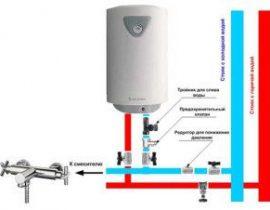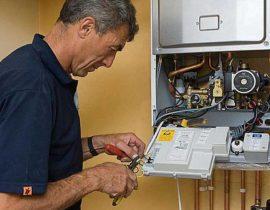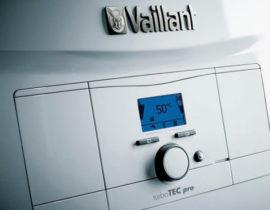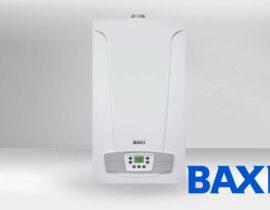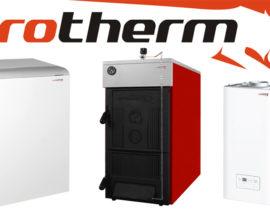Regardless of the brand of the water heater and its cost, breakdowns happen sooner or later. Most of them have nothing to do with the peculiarities of operation, but it would be foolish to exclude the possibility of a malfunction due to the fault of the user himself.
Each water heater, due to its design features, has certain breakdowns, but most of them can be prevented or corrected on their own. The main thing is to follow clear instructions and observe maximum safety.
Content
- Causes of breakdowns
- What breakdowns can be repaired with your own hands and what is needed for this?
- The water temperature does not match the specified parameters
- Leak in the tank
- Boiler does not turn on
- Boiler body is shocked
- Dirty and foul-smelling water from the heater
- Repair of flowing gas water heaters
- General tips and tricks for self-repair
- FAQ
- Boiler Repair Video Tips
Causes of breakdowns
The most common causes of water heater failures are:
- Sudden power surges in the network - lead to burnout of contacts in the heating element, disabling it.
- Wrong installation and connection, lack of grounding - the water heater is operated in conditions not intended for favorable operation, which significantly reduces its service life.
- Lack of service - if the water heater is not cleaned of sediment that accumulates due to polluted water, then sooner or later it will reduce efficiency, after which it will completely fail.
If we consider water heaters from the point of view of their device, then they are of two types:
- Cumulative (boiler) - water from the common system is supplied to the storage tank, where it is heated to the desired temperature and, on demand, is discharged into a separate hot water supply pipeline. Heating is carried out using an electric heating element, and a magnesium anode is used to prevent the development of corrosion, which needs periodic replacement.
- Flowing – water is heated directly when the flow passes through the device. There are electric and gas ones, in which the heating power is much higher than that of storage ones.
Also, water heaters differ in volume, power and brand. Cheaper models are made from the most affordable materials, but their service life is quite limited. A good and reliable option will cost the buyer a little more, but it will last more than one year with timely cleaning.
What breakdowns can be repaired with your own hands and what is needed for this?
Not all breakdowns can be repaired on their own, since the inner and outer parts of most models of storage water heaters are hermetically connected, and access to the middle is possible only through a narrow hole from below. If there is no self-confidence, and the water heater is clearly malfunctioning or not working at all, then it is better to call the master or hand it over under warranty for repairs.
The water temperature does not match the specified parameters
The problem arises in two cases, when the water from the heater is either too hot (literally boiling water) at the minimum heating values, or cold and there is no heating at all. There is also an intermediate malfunction, when the maximum heater values are set, and the water is slightly warm. All problems deserve attention, the reasons for which can be quite a lot.
So, let's consider a situation where the water heater, at maximum values on the relay, produces only warm water in the tap, which is preceded by such possible problems:
- The heating element is covered with scale, it consumes more energy for heating, while the efficiency is at a minimum.
- There are problems in the central board that block the relay signal about the desired temperature.
If the water heater visually turns on and supposedly works, but in fact it only produces cold water, then the reasons may be similar to those described above. If the water temperature indicators are exceeded, the problem is a malfunction of the thermostat or thermostat, which are responsible for fixing the heating parameters set by the person and maintaining this temperature inside the water heater.
If the problem is related to temperature mismatch, you need to perform the following sequence of actions:
- Check the heating element for contamination and proper operation: disconnect the boiler from the mains, let the water cool down and drain it to the maximum, then remove the protective cover at the bottom, open the valve and carefully remove the heating element. Using a multimeter, check the operability of the element, which is fixed in the range of 0.68-0.37 ohms. If there is a break, the indicators will be unstable and will tend to infinity.If there is scale, then it can be removed by soaking in a special acid solution, which can be bought at any household store. Apple cider vinegar is an alternative.
- Get the thermostat and evaluate its performance: disconnect the boiler from the network, drain the water, remove from the wall. Find the thermostat (you can see in the instructions how it looks and where it is located for a specific model) and press the safety button all the way. Next, the metal tube needs to be slightly heated with a lighter. If the thermostat is working, then when heated, it will react and return the button to its original position. If this does not happen, then a complete dismantling and replacement of the element with a new one should be carried out.
Similarly, you should go through all the available contacts with a multimeter, since there is a possibility of a break, which provokes the lack of proper operation.
Leak in the tank
The problem of leak development is associated with corrosion of the metal, which is constantly in contact with water. If you do not change the magnesium anode, as required by the manufacturer, then after a couple of years you can see clear signs of depressurization. In 95% of cases, this problem cannot be eliminated, since the design of the tank assumes tightness, which can only be achieved in the factory.
Self-repair is appropriate only if the leak appears exclusively from under the flange. This happens when the gasket is erased, which creates tightness on the outside of the heating element.
The sequence of actions in this case is as follows:
- Disconnect the boiler from the mains, let the water cool down and drain it as much as possible.
- Remove the lid, substitute the container and carefully open the valve, removing it together with the heater.
- Inspect the rubber valve for deformations and abrasions.
- Replace it by unplugging it first.
If water droplets collect along the contour at the bottom of the boiler, then this cannot be corrected. Craftsmen will say that there is still welding, which will allow you to quickly and reliably repair a hole. But this is inappropriate in the case of closed-type boilers, since the design does not imply access to the outer part of the inner tank. It would be appropriate to replace the water heater with a new one.
Boiler does not turn on
If there is no heating when the plug is inserted into the socket, then there may be several reasons:
- The heating element burned out or there are breaks in contacts, which occurs with frequent sudden changes in voltage in the network.
- Burnt parts of the central board, which control the operation of the entire water heating system.
- Thermostat failure, which captures false readings of water and eliminates the need to heat it.
What can and should be done in this case:
- Inspect the heating element and evaluate its performance using the device - disconnect from the network, drain the water and carefully unscrew the safety valve. If it is defective, then a replacement is needed. This problem is most common in closed type water heaters.
- Go through the contacts of the thermostat: disconnect from the mains, you can not drain the water, remove the protective cover and ring all connections, including the central board. If the indicators are far from normal, then repair is required. If the thermostat can be replaced with a similar one on its own, then this will not work with the board. You will have to call the master, but he does not guarantee that the boiler will work.
You also need to check the serviceability of the plug. It often happens that the wire breaks, and the contacts are squeezed, forming a short circuit.
Boiler body is shocked
In case of accidental contact with the heater, you can see how it transmits a discharge. Even if it doesn’t beat very much with current, it’s quite unpleasant. One reason is the direct contact of electricity with water. This happens due to a crack in the heating element, which causes accumulated scale. When the boiler is connected to the mains, not only its body, but also the flowing water can carry a charge.
In this case, it is necessary not only to check the heating element and, if necessary, replace it, but also to ensure proper grounding of the electrical appliance. If this causes difficulties, then it is better to entrust the repair to the master.
It is extremely unsafe to use a water heater that is energized. Sooner or later, this will provoke a global breakdown or cause health problems.
Dirty and foul-smelling water from the heater
If, when hot water is turned on, something similar to kvass flows out of the tap, having a characteristic smell of a swamp, then it's time to clean the heater. This situation occurs when sediment accumulates inside a closed tank and a mule flows through the pipes. Visually, this may not be noticeable, but garbage tends to accumulate and settle not only on the heating element, but also on the walls of the boiler.
The problem should be solved in two stages:
- Put a filter on the cold water inlet: it will trap debris and dirt, as well as bacteria that can live in a closed tank system. The water will become much cleaner, and preventive cleaning of the boiler will be needed less frequently.
- Clean the boiler: you can pour special disinfectant solutions through the supply tube, then drain the contents into a bucket. There are many special tools to clean the boiler.
The cleaning procedure will not cause any particular difficulties. The sequence of actions depends on the selected tool:
| Name | Quantity | Sequencing |
|---|---|---|
| Lemon acid | 20 g of powder for every liter of water | Mix the required amount of citric acid with 2 liters of water, then inject the solution through the water supply hose. Connect to the network and set the maximum values \u200b\u200bto the relay. Let it boil for 3-4 hours, then open the hot water tap and completely drain the water from the boiler |
| Acetic essence | 10 ml for every liter of water | Vinegar should be introduced into the boiler through a hose, and then connect the hose to the pipeline. Set to maximum temperature and drain completely after 4 hours |
| Acidic solvents for cleaning boilers | See the instructions for proportions. | The agent is poured into the boiler and left for 1-2 hours, after which the water is completely drained |
Repair of flowing gas water heaters
Breakdowns are most often associated with fouling of the heat exchanger with scale, as well as a malfunction of the thermocouple. It is strictly forbidden to repair gas equipment on your own. To find the cause and eliminate it, you need to contact specialists who will do everything on their own.
General tips and tricks for self-repair
 In order for the repair work to be successful and not pose a threat to life and health, you need:
In order for the repair work to be successful and not pose a threat to life and health, you need:
- Inspect and replace parts only in the device that is disconnected from the mains, having previously drained the water in any convenient way.
- Do not engage in self-repair of defective parts that are appropriate to replace with new ones.
- Carry out work, guided by the boiler structure diagrams, which are different for each specific model.
If in the end the water heater did not work or works with some problems, then it is better to call the master who has some experience and will be able to identify all possible causes.
FAQ
There are several problems: malfunction or scale of the heating element, breakdowns in the relay or malfunction of the central board. To determine the true cause (and there may be several) will help a specialist who will diagnose all the work items.
If magnesium anodes dissolve quickly and there is a risk of heating element contamination, then it is necessary to install a cleaning filter at the inlet of the cold water pipeline.
It is necessary to inspect the heating element for cracks and chips. Often, if there is scale and annual salt deposits, its integrity can be compromised, allowing direct contact of water with the coil. Also, the cause may be faulty wiring or the inclusion of several household appliances in one outlet.
The heating element must only be replaced if it is defective.
In conclusion, it is worth noting that not all breakdowns can be fixed by hand, and in some cases it is better not to experiment at all and entrust the diagnostics to the master.All work must be carried out in compliance with safety rules by disconnecting the appliance from the mains. To prevent hot water from causing a burn, it must be drained only after it has been diluted with cold.
Boiler Repair Video Tips







